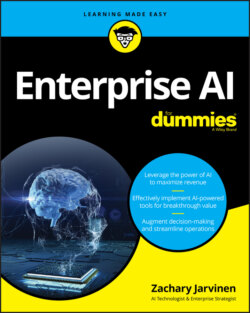Читать книгу Enterprise AI For Dummies - Zachary Jarvinen - Страница 62
Legal
ОглавлениеAI is tackling the mountain of paper that characterizes most legal proceedings by providing better and smarter insights from organizational data to detect compliance risks, predict case outcomes, analyze sentiment, identify useful documents, and gather business intelligence to make better-informed decisions. Through automation and the use of predictive analytics, these technologies have significantly helped reduce the time and costs associated with discovery.
A 2018 test pitted 20 lawyers with decades of experience against an AI agent three years into development and trained on tens of thousands of contracts. The task? Spot legal issues in five NDAs. The lawyers lost to the AI agent on time (average 92 minutes as opposed to 26 seconds) and accuracy (average of 85 percent as opposed to 94 percent).
In one case, a discovery team of three attorneys on a class-action lawsuit had 1.3 million documents to review. They used E-Discovery to code 97.7 percent of the 1.3 million documents as non-responsive, leaving fewer than 30,000 documents for the three-attorney team to review.
AI can aggregate and analyze data across a law department’s cases for budget predictability, outside counsel and vendor spend analysis, risk analysis, and case trends to facilitate real-time decision-making and reporting. AI can perform document on-boarding and reviews based on continuous active learning to prioritize the most important documents for human review — lowering the total cost of review by up to 80 percent.
